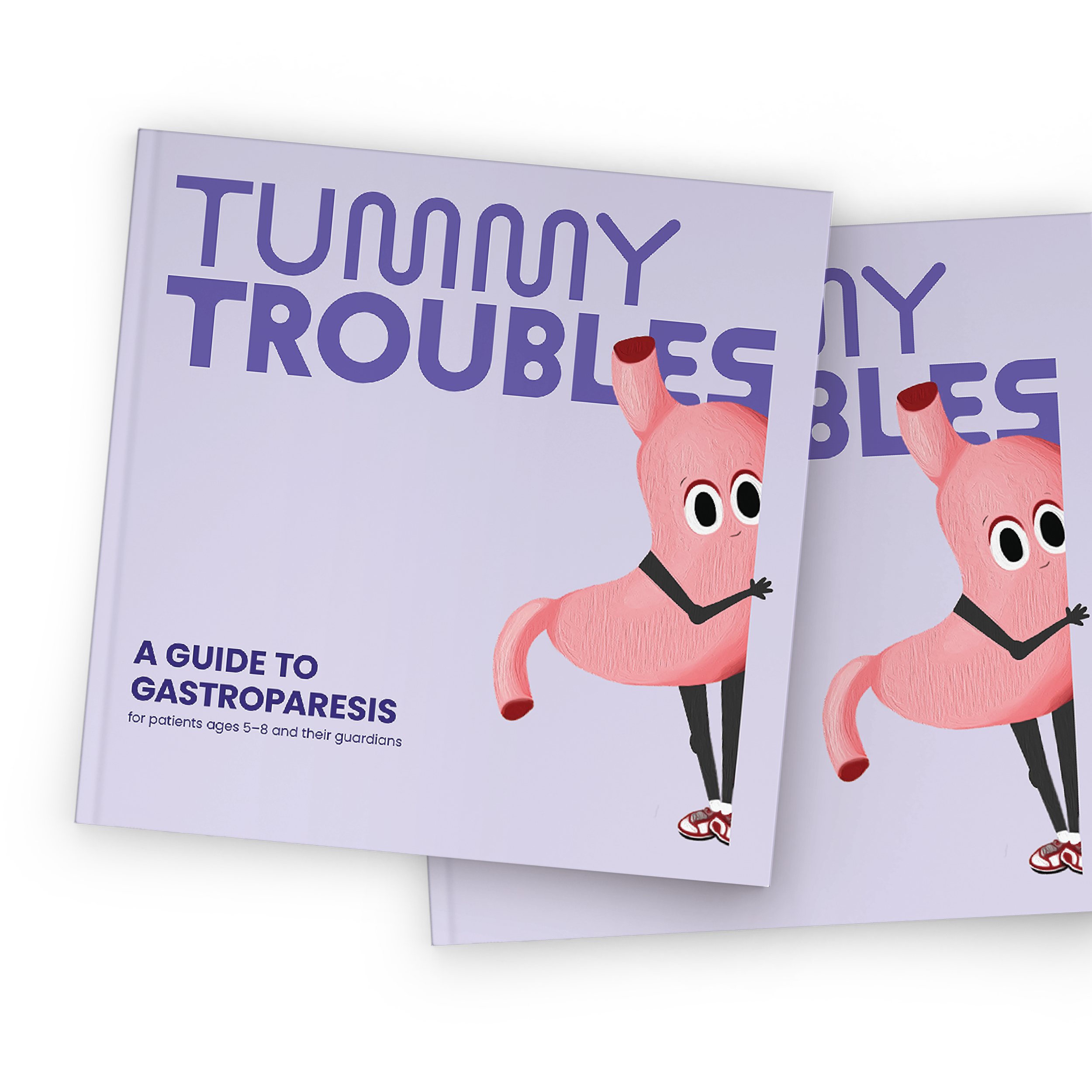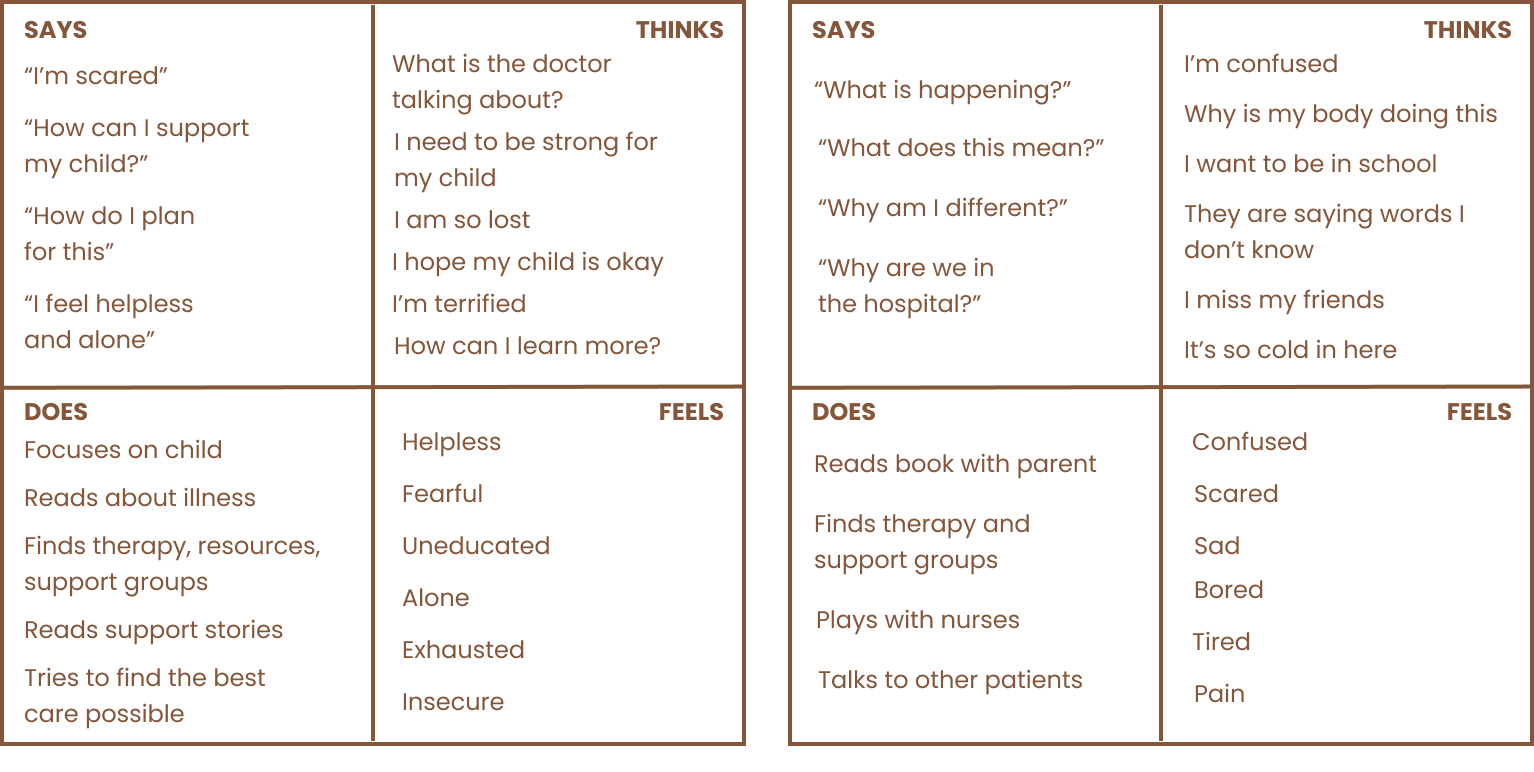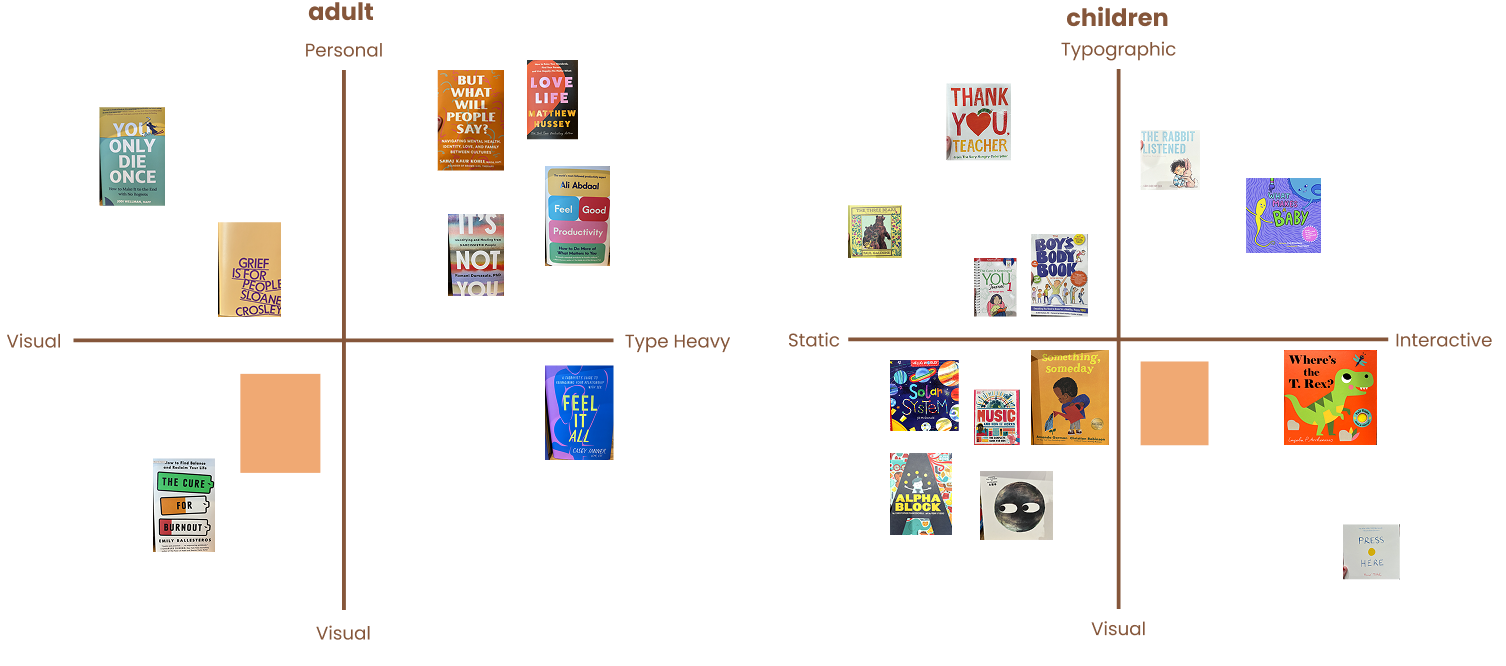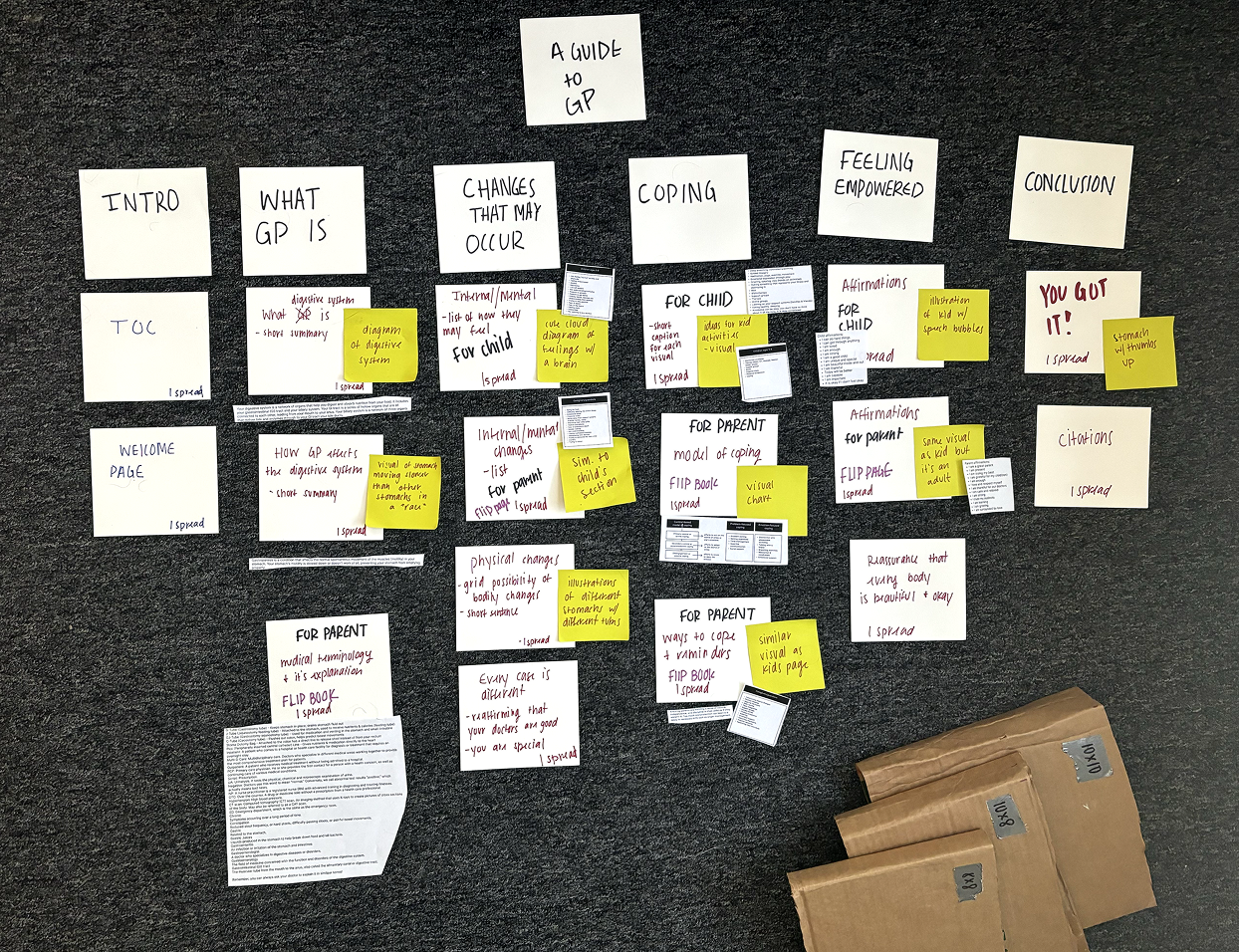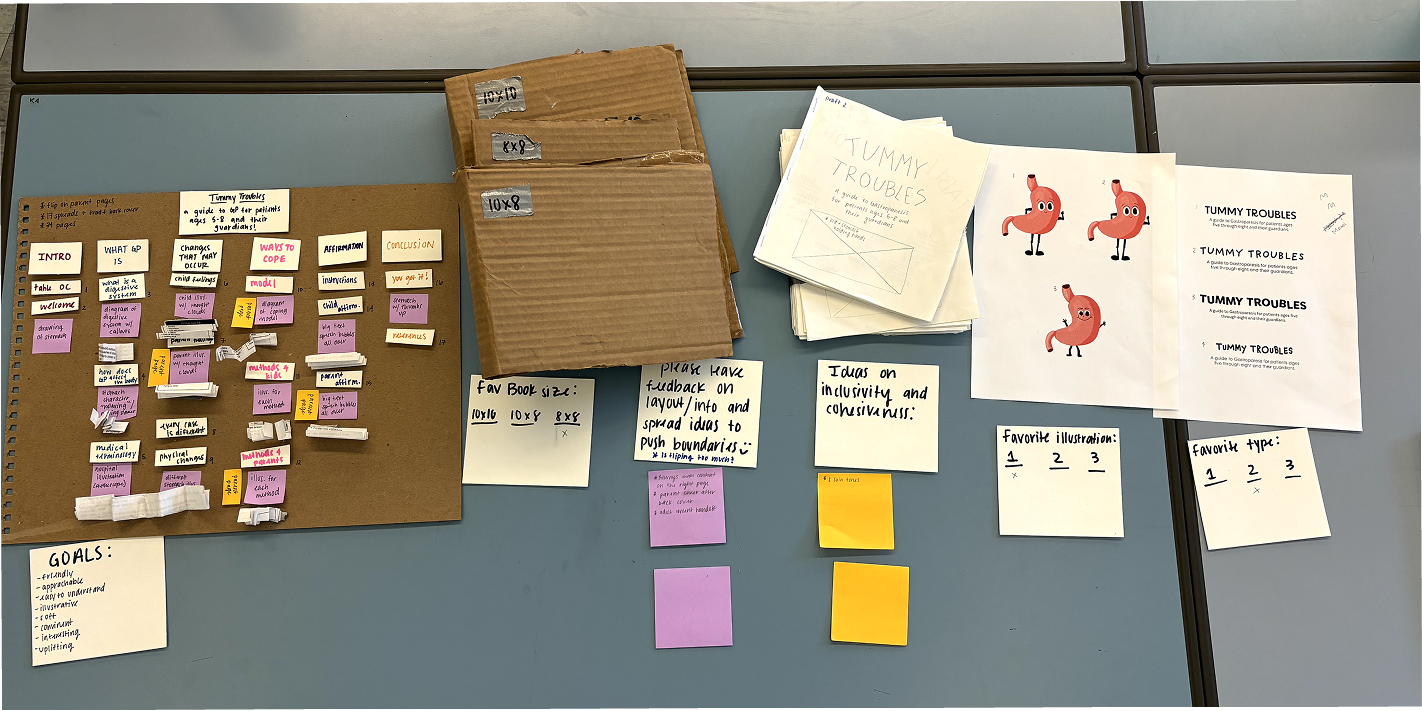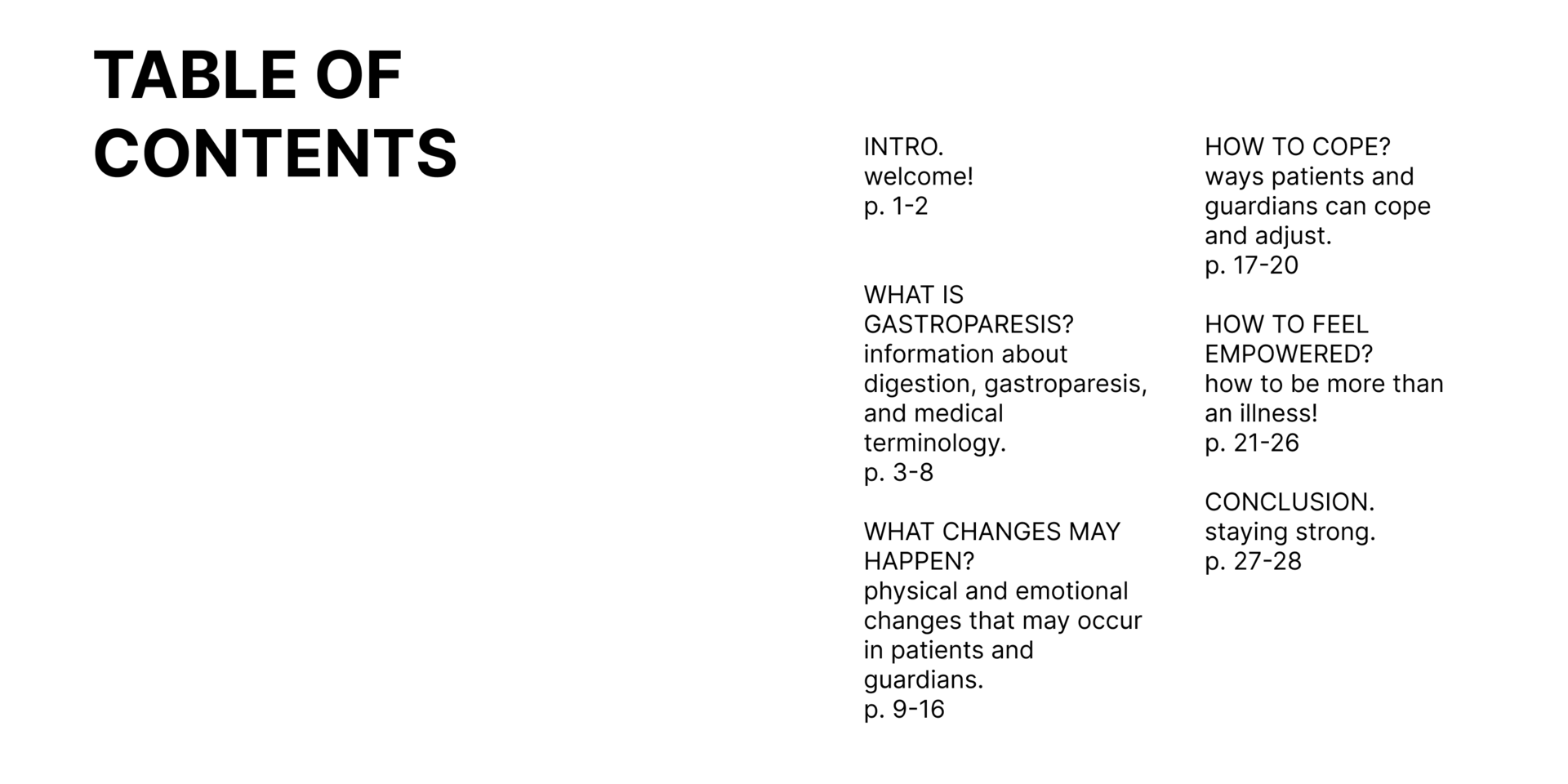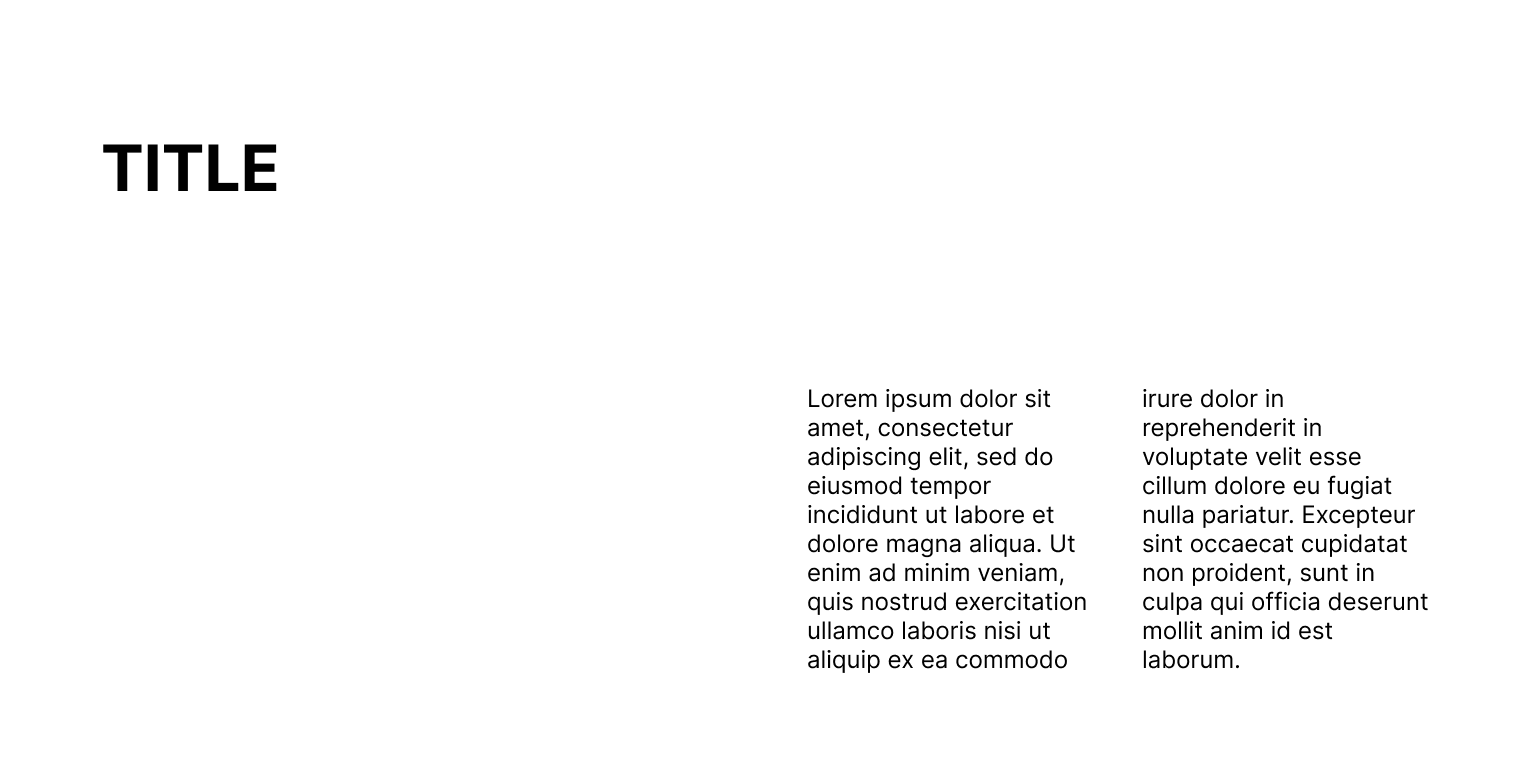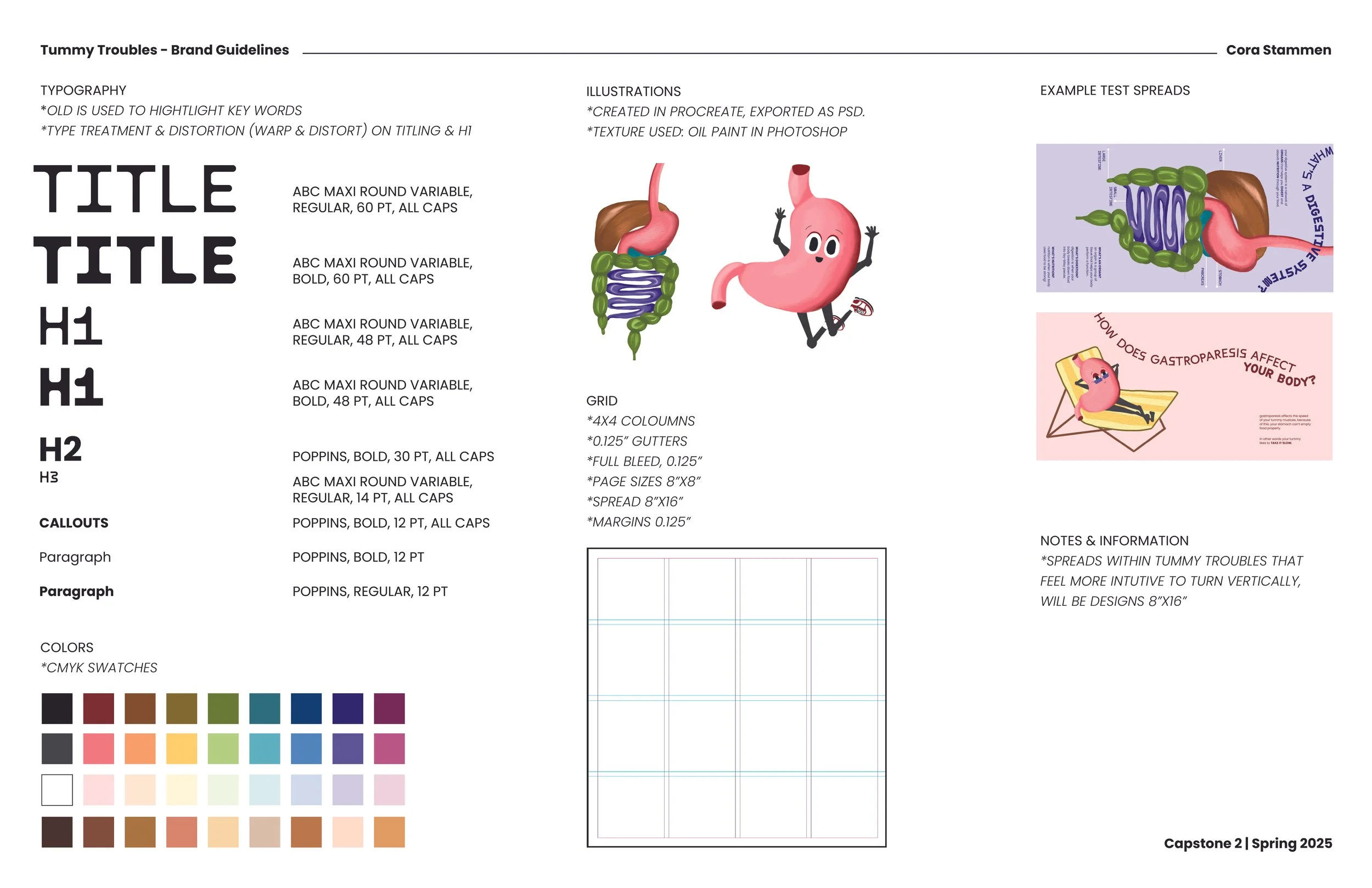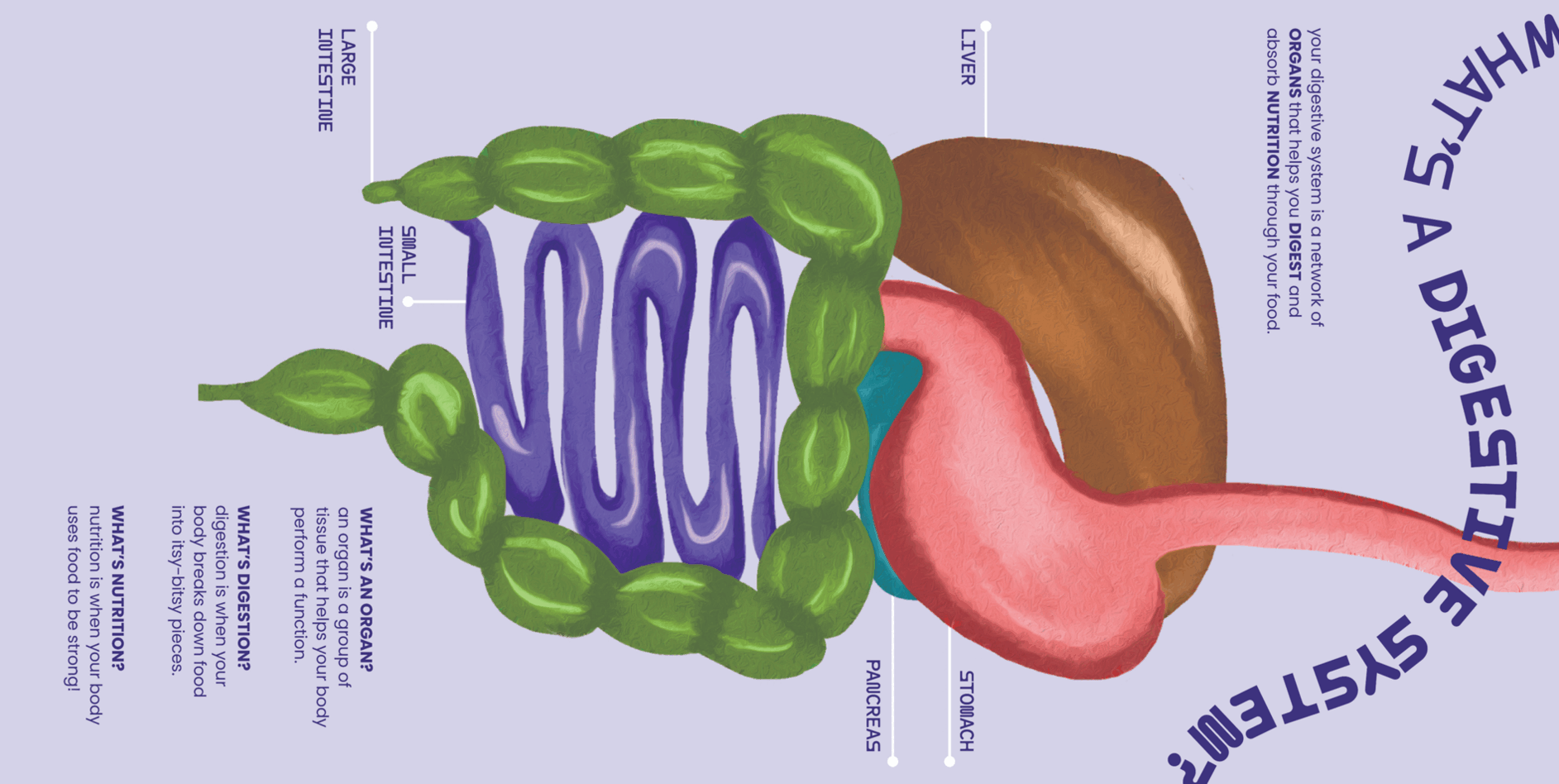tummy troubles
may 2024 – may 2025
why?
Gastroparesis is a chronic illness that affects stomach muscle movement, with symptoms and severity varying by patient, yet often causing significant mental and physical strain. Accessible resources are limited, especially those that support both children and their caregivers, leaving families in need of clear, compassionate guidance.
what.
Tummy Troubles is a children’s book for Gastroparesis patients and their guardians provided by the hospital following a diagnosis. It teaches the reader about what Gastroparesis is, how it affects the body, and ways to cope.
how.
With engaging illustrations, thoughtful typography and a touch of humor, Tummy Troubles serves as both an educational tool, and a source of reassurance, making it an invaluable resource for families facing these challenging circumstances.
research
once i knew my problem space, i needed to gather the content and write the information for my book. in order to do this, i conducted in-depth research on a variety of different factors surrounding gastroparesis. I read several books and online articles about what gastroparesis is, what it does to the body, what it’s comprised of, who it affects and so much more. after my intial research, i was able to create studies and compare data in charts around the key information i wanted to include within my book: mental and physical changes and coping models.
secondary research.
-
Gastroparesis is a condition that affects the normal spontaneous movement of the muscles (motility) in your stomach. Your stomach's motility is slowed down or doesn't work at all, preventing your stomach from emptying properly.
-
Signs and symptoms of Gastroparesis include:
Vomiting, nausea, abdominal bloating, abdominal pain, a feeling of fullness after eating just a few bites, vomiting undigested food eaten a few hours earlier, acid reflux, changes in blood sugar levels, lack of appetite, weight loss and malnutrition. -
Gastroparesis: characteristics and evidence. (n.d.). Journal Title Unknown. Retrieved from https://www.sciencedirect.com/science/article/pii/S0016508521037008
Coping with chronic illness in childhood and adolescence. (2012). Annual Review of Clinical Psychology, 8, 455–480. https://doi.org/10.1146/annurev-clinpsy-032511-143108
Title unknown. (n.d.). Journal Name Unknown. Retrieved from https://psycnet-apa-org.uc.idm.oclc.org/fulltext/2013-21686-006.html
Title unknown. (n.d.). From ProQuest database. Retrieved from https://www.proquest.com/docview/2102830287
Title unknown. (2017). Journal of Child and Family Studies. https://doi.org/10.1007/s10826-017-0986-z
American Gastroenterological Association. (n.d.). Gastroparesis. AGA GI Patient Center. https://patient.gastro.org/gastroparesis/
Cleveland Clinic. (2025, February 12). Gastroparesis. https://my.clevelandclinic.org/health/diseases/15522-gastroparesis
Ask ChatGPT
physical changes.

PICC line

c-tube

g-tube
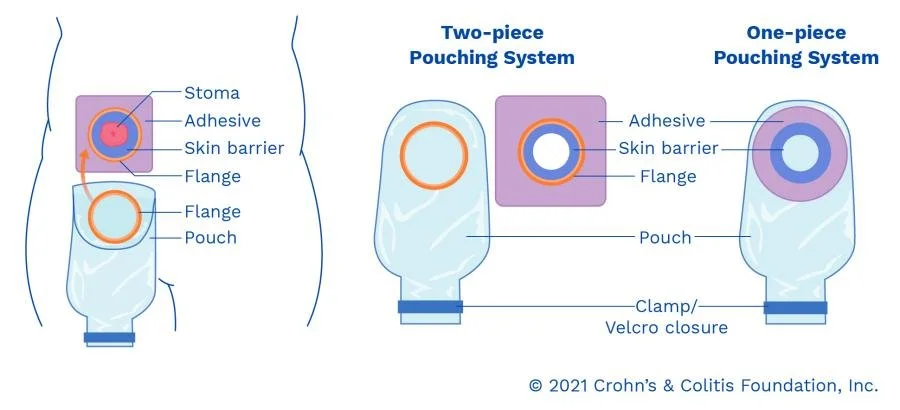
ostomy bag

j-tube

gj-tube
mental & emotional changes.
changes
coping model
coping methods
to gain more specific insight, i needed to gain knowledge from real-life experiences. This included surveying guardians of, siblings of, and patients with chronic illnesses. in addition, i conducted surveys with nurses and doctors to understand the medical side of chronic disease, especially gastroparesis. Lastly, I conducted in-depth interviews with gastroparesis patients and a child psychologist who specializes in treating children with chronic illnesses.
primary research.
survey synthesis.
parent survey
patient survey
sibling survey
interview synthesis.
gastroparesis patients
eva stammen
25 years old, officially diagnosed at ten years old.
beatrice stammen
16 years old, officially diagnosed at two years old.
What was the most difficult experience you’ve had mentally/emotionally has a result of your illness?
There was no one to relate to. In addition, it was hard for others to understand the situation, especially parents. Not having a community and dealing with body image when physical changes occurred was also very difficult.
Did the hospital provide you with any resources on tips to manage your illness or ways to cope?
In-house therapists, procedure-related kits & supplies, and packets that were overwhelming.
What struggles did you encounter in the hospital?
Patient 1:
feeling alone
pure boredom
no motivation
hunger
leaving would be scary
hated sitting in the hospital with nowhere to go
very repetitive
depression
Patient 2:
Sitting there watching everyone else’s life move on
overwhelming leaving and having to take care of yourself
How to move on and continue with life
What content do you think is NECESSARY for this book to include?
community
not feeling alone
Awareness
Don’t halt your life or goals just in case you get sick again
gastroparesis parent
amy stammen
56 years old, parent of two gastroparesis patients.
What information would have helped you in providing support for this person?
Being provided with more background knowledge or a pamphlet for information.
What was difficult about parenting someone chronically ill?
Watching your child suffer
feeling like you are split between your family and the hospital.
Finances
planning
balance
fear
child psychologist
Dr. julie stucke
expert in behavior health with a focus in coping with chornic illness
What coping mechanisms/tips do you recommend for children/parents of a GP Diagnosis?
Deep breathing, controlled breathing
Guided imagery
Meditation, yoga, exercise, movement
Emotional expression through play
Drawing, coloring, clay (hands-on activities)
Making something that represents your illness and destroying it
Rest
Bibliotherapy
Support groups
Therapy
Online groups
Leaning on your support systems
Eating healthy, sleeping
Avoidance
a sense of routine, independence, and discipline
generating
After gathering all of my content and information, I needed to make sense of it. Which pieces truly belonged in this book? Which experiences were the most significant? Once I evaluated how each element aligned with the overall experience, I began mapping the user journey and identifying exactly where this book fits within it.
generative methods.
action & audience.
guardian actions
patient actions
demographic
observation framework.
parent analysis
patient analysis
planning.
user journey
benchmarking
affinity diagrams
production
content organization.
To better organize my content, I redefined my affinity diagram, applied it by sketching complete book concepts, and then refined the results. This process allowed me to finalize my copy and begin exploring page layouts. in addition, i began exploring typographic options, illustrative styles and book sizes.
pagination.
I began digitally laying out my content to better envision potential page styles without incorporating illustrations. I also explored various typographic treatments and page compositions.
draft 1.
typographic exploration.
draft 2.
illustration.
once my page concepts were finalized, i was able to create all of my illustrations for each page. to do this, i drew each of them on my iPad, then took them into Photoshop to add texture.
















brand guidelines.
After I had a good idea of my illustrations and my page layouts, I made my ever-changing brand guidelines to use while iterating and ideating on the pages of my book.
iteration & ideation.
create. create. create. i iterated, ideated, and tested out spread layouts, color combinations, typographic ideas, hierarchy, and more until i knew the direction of my final book.
final
the book.
Printed as a lay-flat book on matte paper, Tummy Troubles is a compilation of the past year of my life, created as a vital resource for families navigating gastroparesis.


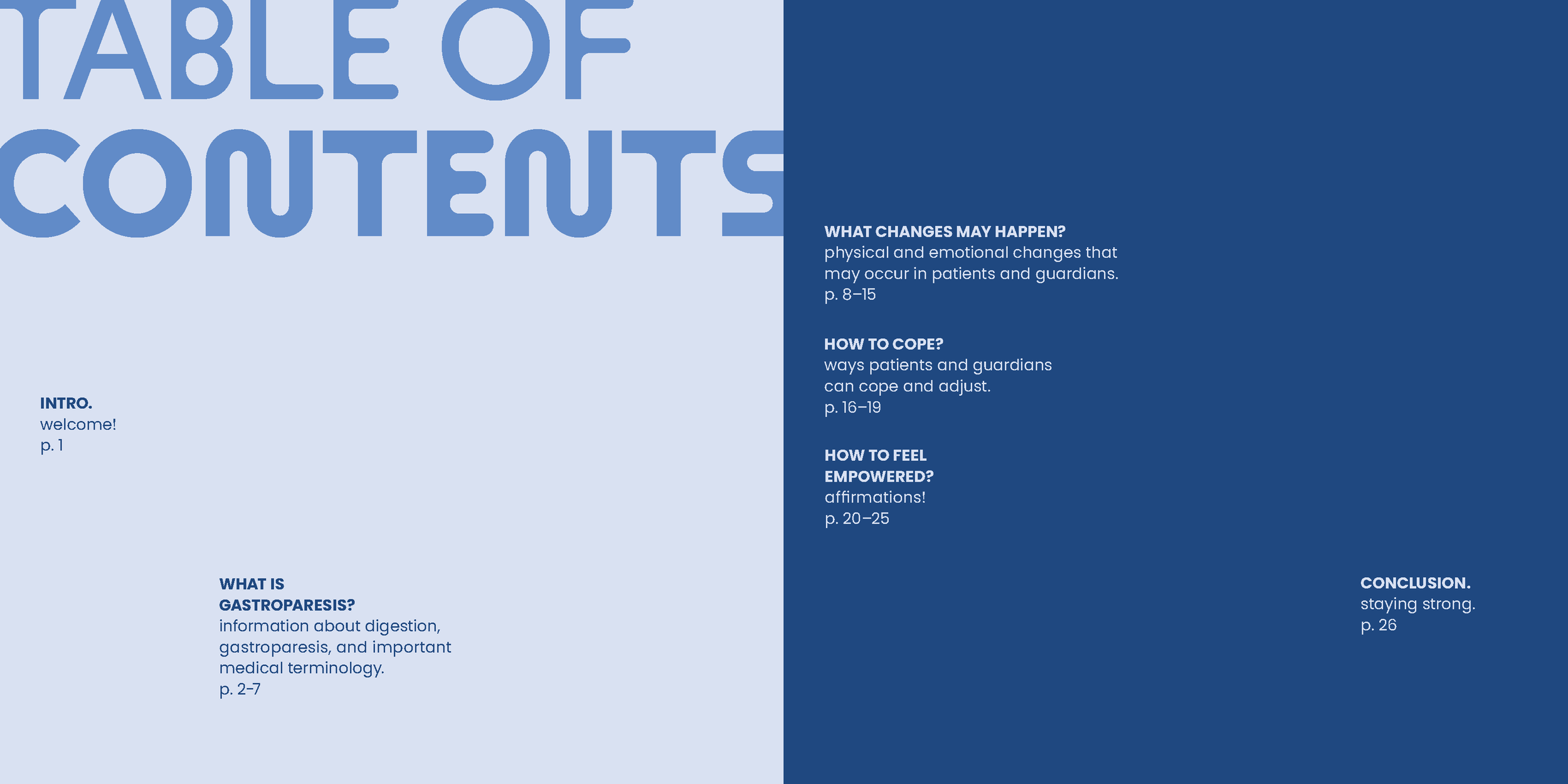









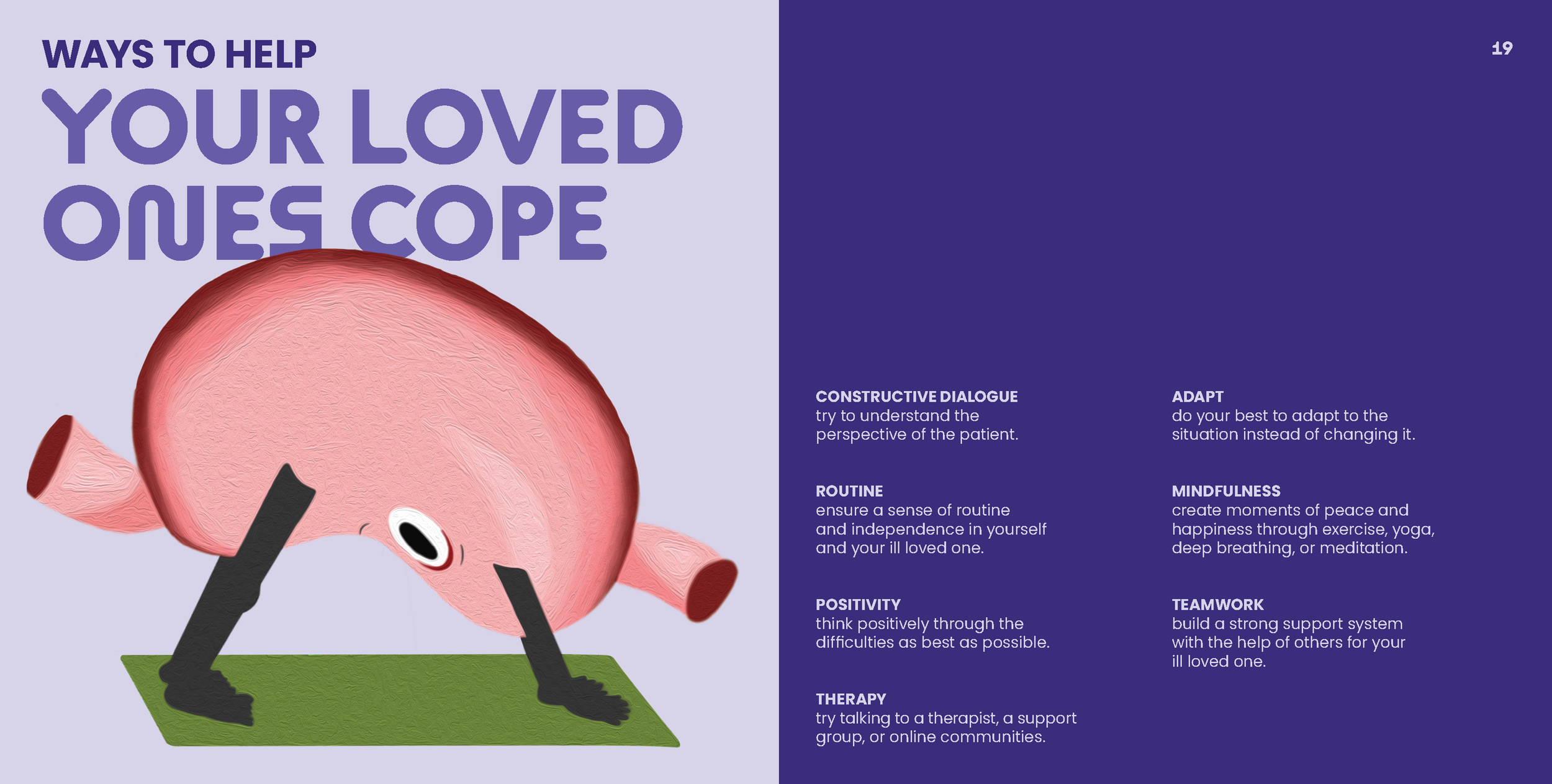
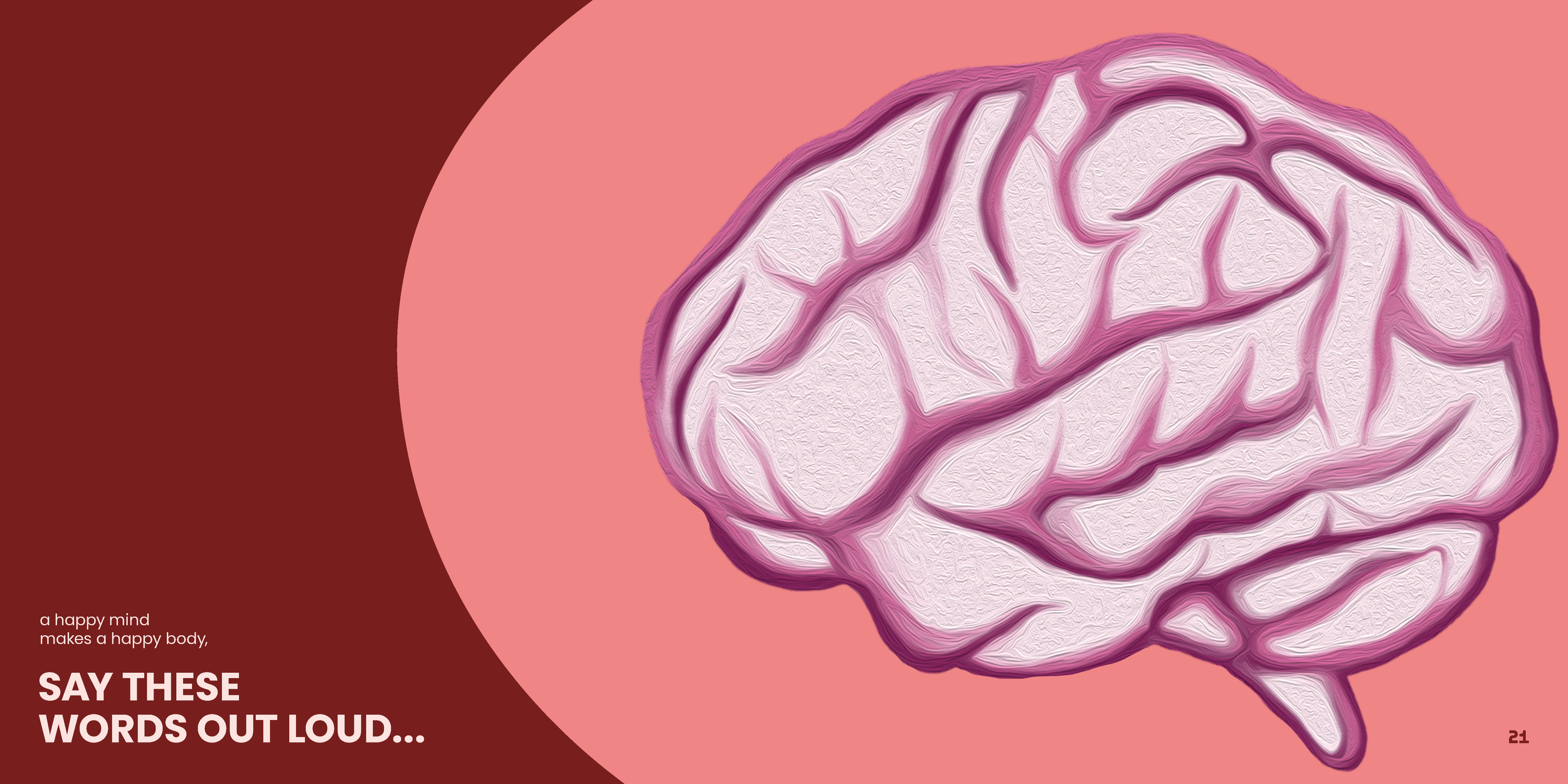



the touchpoints.
along with my book, I also created a large-scale informative poster, stickers, a stuffed animal plushie, a detailed process book, a behance page, and coloring pages as a part of my final display for our senior art show.
